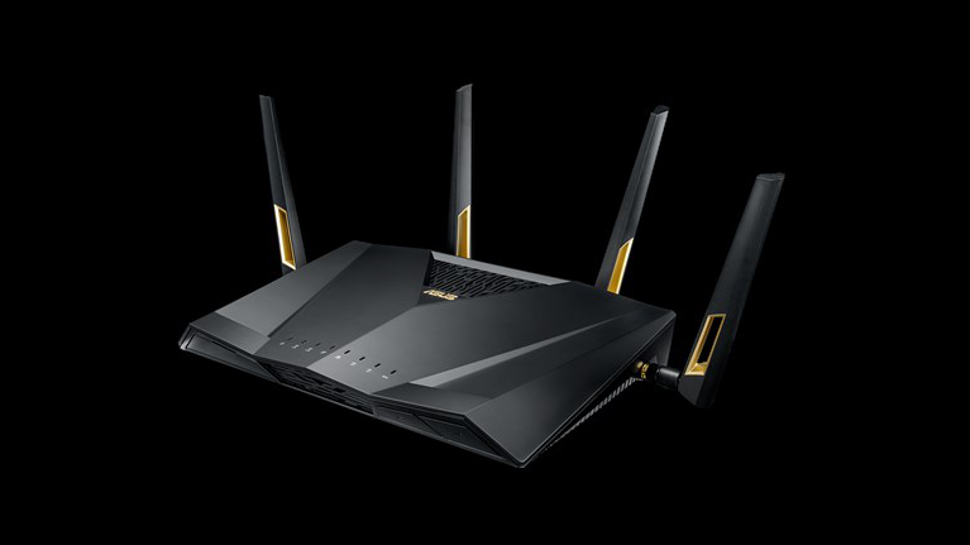Wi-Fi 6E: everything you need to know about the new wireless network
Wi-Fi 6E is here. Are you ready for it?

You may have heard of Wi-Fi 6E recently, and that may seem strange since it feels like we all just got Wi-Fi 6 just a few months ago. But it's actually been about two years now since the late 2019 rollout of the last wireless networking standard.
And even though Wi-Fi 6E isn't so big an advance that it represents a whole new generation of wireless networking technology, it's still a pretty big advancement for the users.
Wi-Fi 6E offers better speeds, more connection capacity, and lower latency, especially if you haven't made the jump to Wi-Fi 6 yet.
So what is Wi-Fi 6E? Why is it faster? And how and when can you get it? Read on to find out all you need to know about this exciting new networking standard.
Wi-Fi 6E: cut to the chase
- What is it? Wi-Fi 6E is a wireless technology that boosts Wi-Fi 6 into the 6GHz spectrum
- When is it out? It is currently available now in the US, but still needs regulatory approval in many countries
- What will it cost? The cost will depend on the router you buy, which can range from those provided by your internet service provider to over $1,000/£1,000 for Wi-Fi 6E Mesh routers
Wi-Fi 6E release date
The Wi-Fi Alliance, the organization which drafts new wireless technology standards, won FCC regulatory approval to open up the 6GHz band for unlicensed Wi-Fi broadcasting in 2020, but the process of certifying devices for Wi-Fi 6E started in early 2021.
In 2022, many more Wi-Fi 6E devices are being sold and other regulatory agencies around the world are considering opening up the 6GHz band to Wi-Fi 6E devices, so availability will steadily increase globally. When exactly it will be available though is up to government regulatory bodies, not industry, however.

Wi-Fi 6E routers and pricing
Wi-Fi 6E routers are already available from major manufacturers like Netgear, Orbi, Linksys, and Asus. Their prices range from ISP rental charges around $20/£20 a month to over $1,000/£1,000 to purchase yourself.
Get daily insight, inspiration and deals in your inbox
Sign up for breaking news, reviews, opinion, top tech deals, and more.
The Netgear Nighthawk RAXE500, for example, will cost you about $579/£449/AU$900. The best mesh Wi-Fi routers will obviously me more pricey, depending on how many extenders you get. The Orbi mesh Wi-Fi system, for example, offers a three-pack system that costs $999/£899/AU$1,699.
The Orbi system might be expensive, but its at least cheaper now than it was when it was first released at $1,499/£1,499 (about AU$2,100).
Wi-Fi 6 specs and performance
The underlying technology of Wi-Fi 6E isn't all that different from Wi-Fi 6, but what it does is open up the 6GHz band of the radio spectrum to Wi-Fi signals.
This means more available networking channels for devices to use at Wi-Fi 6 speeds. The biggest drag on Wi-Fi 6 connections isn't that its slower, but that too many connections over the 2.4GHz and 5GHz bands (including from neighboring Wi-Fi routers other than your own) leads to interference that can reduce speeds or even drop connections.
With the much wider 6GHz band, the same number of devices each have more bandwidth to work with, which means that they will all be getting much closer to the maximum speeds allowable under Wi-Fi 6.
In most cases, opening up the 6GHz band opens up as many as four times as many channels for Wi-Fi networks to use, meaning better and faster connections for more devices.
This includes greater than 1Gbps connections in the future for many homeowners and businesses, and more connected devices that can achieve those speeds.
One issue though is that 6GHz signals use a shorter wavelength than the current 5GHz or 2.4GHz signals, and so are more susceptible to actual physical interference from walls and other physical obstructions in your home or office.
As such, mesh network devices will most likely communicate with each other using the lower bands that offer better signal penetration, but broadcast in the 6GHz band to the end users.
- Check out our picks for the best Wi-Fi 6 routers

John (He/Him) is the Components Editor here at TechRadar and he is also a programmer, gamer, activist, and Brooklyn College alum currently living in Brooklyn, NY.
Named by the CTA as a CES 2020 Media Trailblazer for his science and technology reporting, John specializes in all areas of computer science, including industry news, hardware reviews, PC gaming, as well as general science writing and the social impact of the tech industry.
You can find him online on Bluesky @johnloeffler.bsky.social